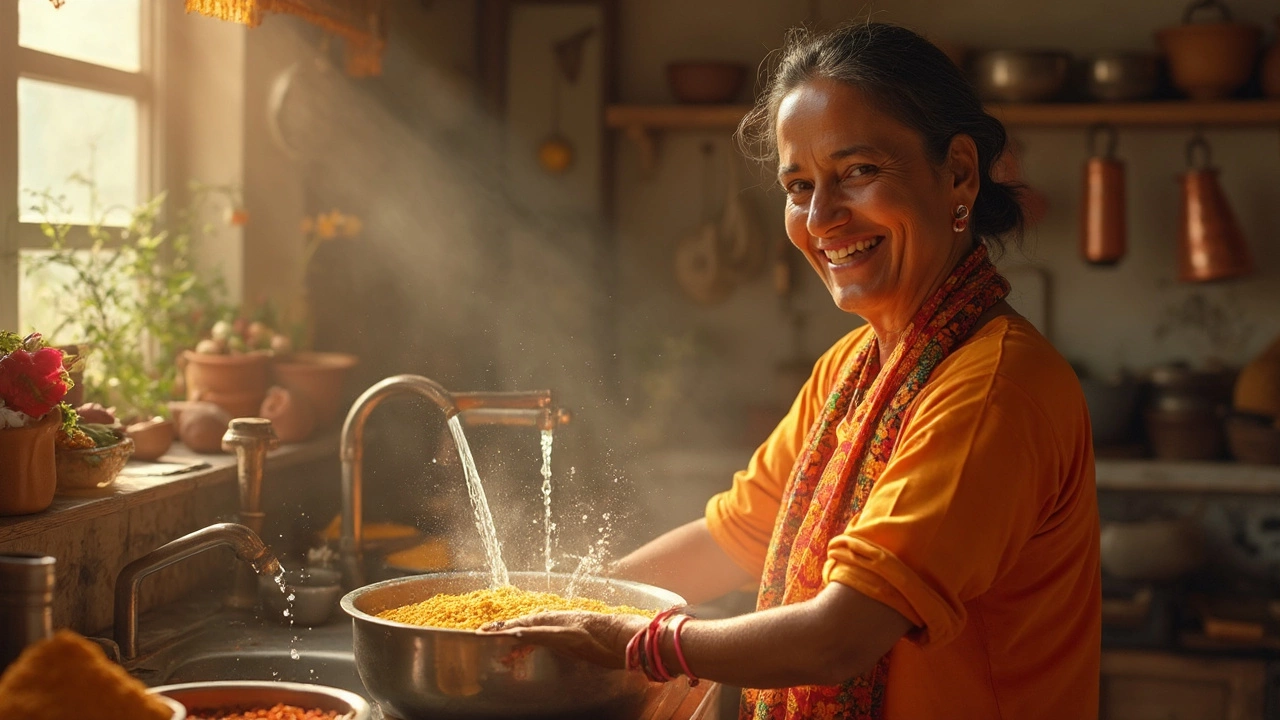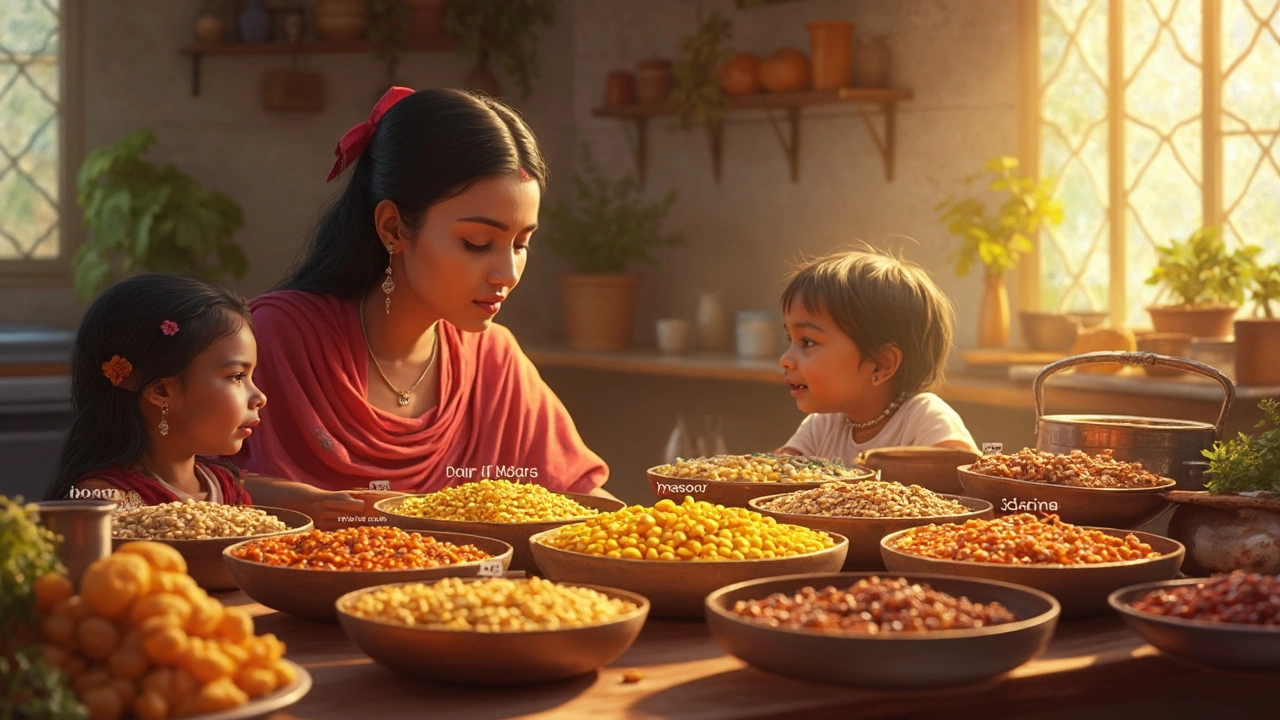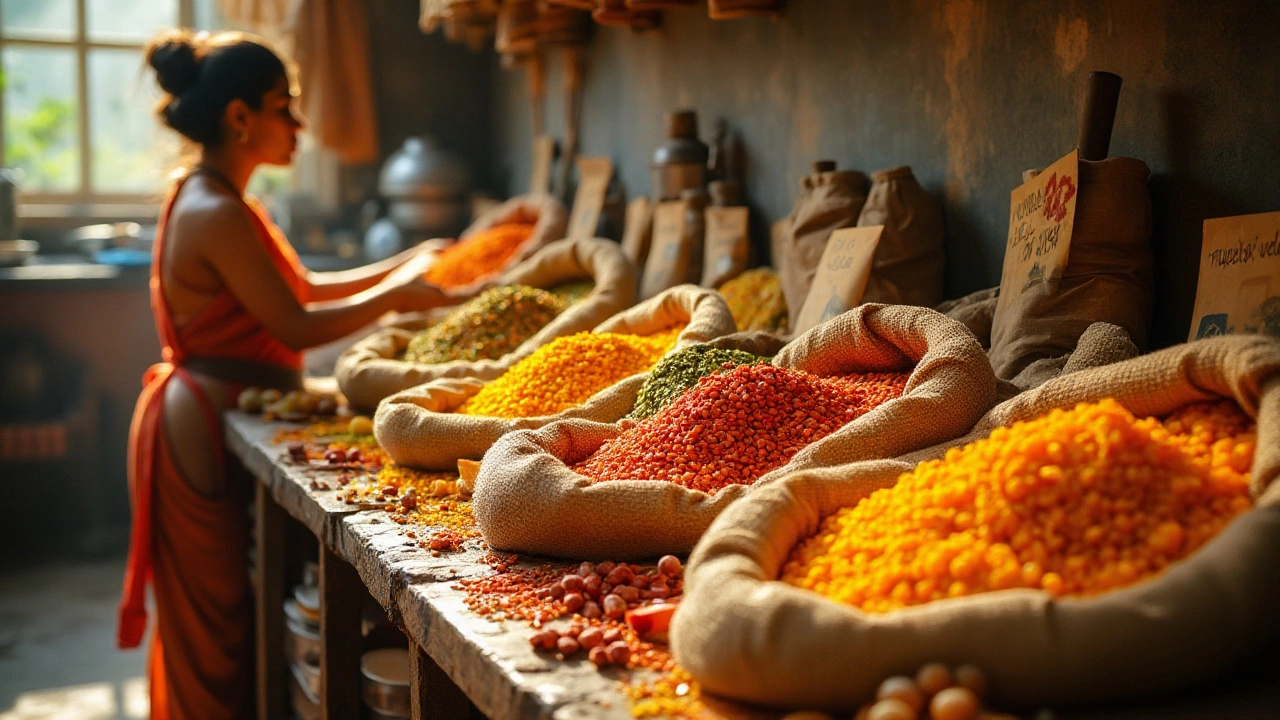All About Lentils: Simple Tips, Tasty Recipes, and Why They’re So Good for You
When you hear the word “lentils,” you might picture a humble bowl of dal or a quick soup. In reality, lentils are a powerhouse of flavor, nutrition, and versatility. Whether you’re a beginner or a seasoned cook, mastering lentils can change the way you eat Indian food forever.
Choosing and Preparing the Right Lentil
India grows many varieties – red, yellow, green, brown, and black (urad). Red and yellow split lentils (toor dal, moong dal) cook fast and are perfect for smooth soups. Green and brown lentils hold their shape, making them ideal for salads or chunky stews. Black urad gives a creamy texture when boiled long enough, and it’s the star of many south Indian dishes.
Before cooking, give the lentils a quick rinse. For split dal, a short soak (15‑30 minutes) speeds up cooking and reduces any earthy taste. Whole lentils benefit from a longer soak – about an hour – which shortens the simmer time and helps them digest easier.
Cooking Basics That Make a Difference
Use a pot with a tight‑fitting lid. Add 3 cups of water for every cup of washed lentils. Bring to a boil, then lower the heat and let it simmer gently. Skim off any foam that forms on top; that’s the bitter layer you don’t want.
A pinch of turmeric not only adds color but also boosts the anti‑inflammatory power of lentils. Salt should go in near the end of cooking – adding it too early can make the beans tough.
For extra flavor, temper the cooked lentils with hot oil, mustard seeds, curry leaves, and a few dried chilies. This quick “tadka” lifts the whole dish and gives that classic South Indian finish.
Health Benefits You’ll Feel
Lentils are packed with protein, fiber, iron, and folate. One cup of cooked lentils gives roughly 18 g of protein and 16 g of fiber, which helps keep you full and supports steady blood sugar. They’re low in fat, making them a great meat‑free option for weight‑loss plans.
If you’re watching your cholesterol, the soluble fiber in lentils can help lower bad LDL levels. Plus, the iron in lentils is best absorbed when you pair them with vitamin C‑rich foods like lemon juice or tomatoes.
Easy Recipes to Try Right Now
Quick Red Lentil Dal: Rinse 1 cup red lentils, add 3 cups water, ½ tsp turmeric, and a pinch of salt. Simmer 15‑20 minutes until soft, then mash lightly. Finish with a temper of mustard seeds, cumin, dried red chilies, and a splash of lemon.
Green Lentil Salad: Cook 1 cup green lentils until just tender (about 20‑25 minutes). Drain and cool. Toss with diced cucumber, tomatoes, chopped cilantro, a drizzle of olive oil, and a squeeze of lime. Season with salt and pepper.
Black Urad Curry: Soak ½ cup black urad overnight. Drain, grind with ginger, garlic, and green chilies into a smooth paste. Cook with onions, tomatoes, and a mix of coriander, cumin, and fenugreek seeds. Simmer until thick and serve with steamed rice.
These recipes give you a taste of how diverse lentils can be, from creamy soups to fresh salads. Experiment with spices, add vegetables you love, and you’ll find a lentil dish for every mood.
Ready to explore more? Check out our post “What Do Americans Call Dal?” for a fun look at how lentils travel across cultures, and dive deeper into the health side with our article on the best Indian curries for weight loss. With a handful of lentils and a few simple steps, you’re set to enjoy nutritious, delicious meals every day.
Do You Need to Rinse Dal? The Answer Might Surprise You
Rinsing dal might seem like a small step, but it can completely change your dish. This article explores whether rinsing dal is actually necessary, what happens if you skip it, and how it impacts taste and health. Learn the science behind rinsing plus practical kitchen tips from seasoned cooks. Make every dal recipe simpler—and tastier—with these insights.
Dal vs Lentils: What Sets Them Apart (And Why Your Dishes Taste Different)
Ever wondered if dal and lentils are the same thing? This article unpacks the real difference, showing what each term means in kitchens—especially Indian ones. You'll learn why knowing the difference matters for your next dal recipe and how it can make your meals turn out just right. Plus, there are some smart shopping and cooking tips to save you confusion in the store and in the kitchen. Spoiler: They’re not always interchangeable.
Dal Varieties You Might Want to Skip in Your Recipes
Dal is a staple in many cuisines, offering a nutritious and hearty option for meals. However, not all dal varieties are created equal, and some might be best avoided in your everyday cooking due to their potential health impacts or cooking complexities. This article delves into the different types of dal that might not be suitable for regular consumption and provides tips on how to select the right dal for your recipes. Discover how factors such as cooking time, taste, and dietary considerations can influence your choice.


